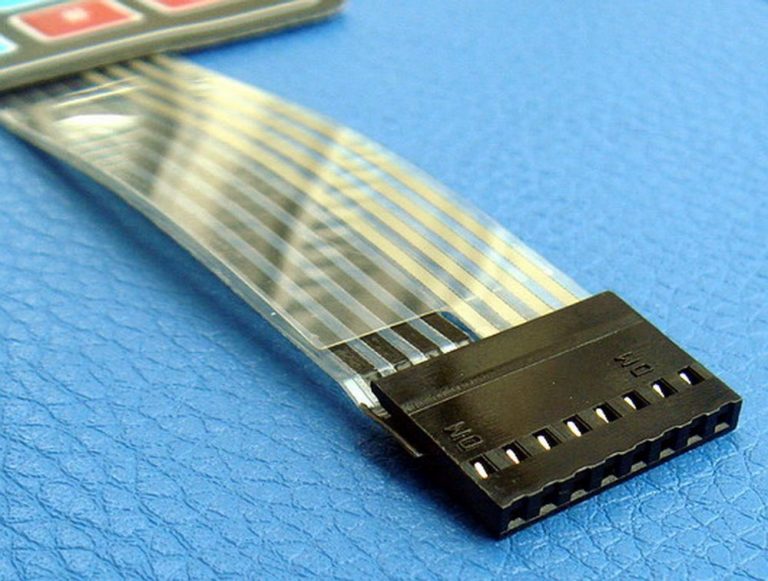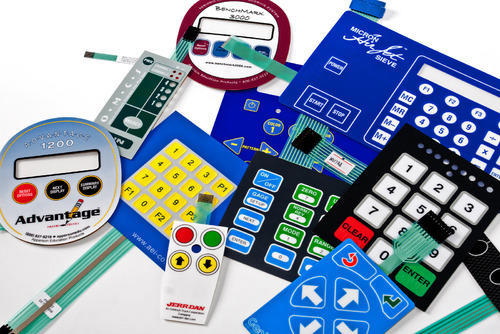The Ultimate Source on Membrane Switches Over: Style, Performance, and Applications
Membrane switches serve as an intriguing junction of style and performance, playing a crucial duty in modern-day customer interfaces across various markets. As we check out the diverse applications of membrane layer buttons, it becomes evident that their flexibility and longevity are essential in atmospheres varying from medical care to customer electronic devices.

Comprehending Membrane Buttons
Membrane buttons are a kind of interface technology extensively used in different electronic tools, defined by their slim, adaptable style and capability. These switches include numerous layers that include visuals overlays, adhesive layers, and wiring, enabling a small and efficient interface for individuals. They can be found in home appliances, clinical devices, and industrial control board, providing a dependable technique for customer interaction.
Among the key advantages of membrane layer switches is their capacity to stand up to contaminants such as dust and wetness, making them ideal for environments where longevity is vital. Their low-profile layout allows for seamless combination right into different applications, while the adjustable visuals overlays boost individual experience by giving clear visual feedback. Furthermore, membrane switches can accommodate a range of innovations, such as responsive feedback and backlighting, additional boosting their use.
The production procedure for membrane layer changes normally involves screen lamination, die-cutting, and printing strategies, making certain precision and consistency in production. On the whole, membrane switches over stand for a flexible and effective service for modern digital gadgets, incorporating capability with aesthetic appeal in interface style.
Trick Elements and Style Elements
A range of vital elements and design components integrated to create an efficient membrane button. At the core, the graphic overlay serves both visual and functional purposes, offering a straightforward interface while protecting interior components from ecological elements. The selection of products, typically polyester or polycarbonate, affects sturdiness and tactile comments.
Underneath the overlay, the adhesive layer makes sure the button adheres securely to the substratum, which can be glass, steel, or plastic. The spacer layer is crucial, as it preserves the essential void between the circuit and the overlay layers, enabling efficient actuation. Membrane Switches. Circuit traces, generally made from conductive ink or adhesive, are printed on a versatile substratum, enabling electrical signals to be transmitted when stress is applied
Design factors to consider additionally consist of the arrangement of responsive domes or embossing that supply physical comments to the customer, boosting the general experience. Additionally, the design and spacing of the buttons have to be optimized for convenience of use, making sure that customers can browse the interface intuitively. In general, these elements and style elements work synergistically to produce a reliable, practical membrane layer button customized to details applications.
Functionality and Procedure System
At the heart of efficient performance for membrane layer switches exists their functional device, which facilitates user interaction with an easy yet effective style. These buttons run on the concept of stress activation, where a customer uses pressure to a marked location of the switch (Membrane Switches). This action compresses the layers of the switch, completing an electric circuit that sends out a signal to the linked gadget
The construction usually includes a leading graphic layer, a sticky spacer layer, and a bottom circuit layer, which jointly develop a durable user interface. When pressure is applied, the leading layer falls down versus the bottom circuit layer, allowing conductive traces to attach. This layout not just makes it possible for clear tactile feedback however likewise guarantees toughness and dependability, as the switches are typically resistant to dirt and wetness.
Furthermore, the adaptability of membrane switches over permits integration with various modern technologies, consisting of LED indicators and microcontrollers, boosting their performance. By offering a structured user interface that minimizes mechanical wear, membrane layer switches continue to be a preferred choice in applications varying from consumer electronic devices to industrial tools, guaranteeing optimum performance and user contentment across varied environments.
Kinds Of Membrane Layer Switches

An additional significant category is lit up membrane buttons, which include backlighting to boost visibility in low-light conditions. These buttons are usually utilized in control panels and dashboards where clear visibility is essential.
Additionally, there are customized membrane changes created to fulfill details dimensional, visual, and useful demands. These customizations can consist of unique forms, shades, and designs, permitting smooth assimilation right into different devices.

Applications Across Various Industries
Just how do membrane layer buttons enhance capability across diverse sectors? These functional elements are important to various applications, providing streamlined user interfaces and durable performance. In the medical sector, membrane layer buttons play a critical function in gadgets such as diagnostic equipment and person tracking systems, where dependability and convenience of cleaning are extremely important. Their capacity to endure severe settings makes them excellent for lab instruments and surgical devices.
In the vehicle industry, membrane buttons are commonly made use our website of in dashboards and control board, providing user-friendly controls that enhance driver safety and security and ease. The consumer electronic devices sector additionally takes advantage of their lightweight and personalized attributes, enabling smooth styles for smart devices and home devices.
Additionally, membrane layer switches discover applications in commercial automation, where they add to efficient machinery operation and surveillance systems. Their resistance to dust and wetness ensures performance popular problems (Membrane Switches). Additionally, the food and beverage market uses membrane layer buttons for tools control, where health and longevity are crucial
Final Thought
In conclusion, membrane switches over stand for a crucial technology in customer interface innovation, defined by their distinct design and capability. The flexibility of membrane switches promotes their application across diverse markets, from medical devices to customer electronics.
Membrane layer changes serve as an interesting intersection of layout and performance, playing a crucial duty in contemporary customer interfaces across various markets.Membrane buttons are a type of customer interface innovation extensively utilized in numerous electronic try here tools, defined by their slim, flexible layout and performance.At the heart of reliable performance for membrane layer switches over exists their operational system, which promotes individual communication through a basic yet efficient style. These buttons run on the principle of pressure activation, where a user uses force to a marked area of the switch.In verdict, membrane changes stand for a crucial advancement in customer interface innovation, defined by their unique layout and functionality.
Comments on “Why Designers Select Membrane Switches for Their High Performance and Durability”